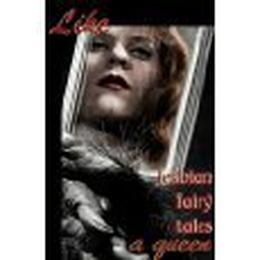Like A Queen: Lesbian Erotic Fairy Tales
Cecilia Tan, Rachel Kincaid, A.D.R. Forte, Kaysee Renee Robichaud, Clarice Clique, Michael M. Jones, Quatre Grey

Includes the stories:
Mirror, by Clarice Clique,
The Queen's Jewel, by ADR Forte,
Gretel's Dilemma, by Kaysee Renee Robichaud,
After the Hunt, by Michael M. Jones,
The Stepmother's Girl, by Quatre Grey
FROM THE INTRODUCTION
by Rachel Kincaid
Fairytales (and their cousins fables, myths, and folk tales) have been told and retold since before the written word. Their details change from generation to generation, and culture to culture. Names and settings shift and mothers become stepmothers as the needs of the storyteller change. This tradition hasn't ended with modern times: contemporary writers such as Neil Gaiman and Francesca Lia Block have wrought beautiful and haunting versions of old stories, and there are already a dozen published books of erotic fairytales - most of them straight, but not all of them. So why put together another one? What can one more set of reworked Cinderellas possibly contribute?
Fairytales were originally conceived as, essentially, indoctrination and training for young children. In every telling they reveal and reinforce the values of the culture that created them: little girls who don't listen to their mothers will be cruelly devoured, and young women who are too eager to use forbidden spinning wheels (or lose their virginities, however you want to read it) will be punished. We tell the same stories now for the same reason, but we change them to impart the messages that we want others to know, and that we ourselves need to hear. The ancient tale of Cinderella offered hope that good-heartedness and hard work could secure a happy life where superficial beauty and trickery could not. The modern "Cinderella story," seen in forms from the exciting new lesbian novel Ash by Malinda Lo to Jennifer Lopez movies, tells us that we deserve to be happy even if we are poor or overworked or uneducated or of color or gay.
With this in mind, the significance of the stories in Like A Queen becomes clear. These stories are fun and sexy and clever, but they are also important. The original Grimm's fairytales were set without exception in a world of compulsory heterosexuality; even worse than being ostracized or punished, queer people didn't even exist. These stories are our way of writing ourselves back into our cultural memory; of making sure that the values that we're imbibing include us and our desire in a positive light - a practice that's necessary no matter how many times it's already been done. As you're about to find out, the results have been amazing. Fairytales often feature women at odds with each other, competing for male attention, but they have now been transformed into spaces where women are powerful, where they grow stronger through their love for one another, where instead of being punished for their sexuality they revel in it with fabulously beautiful princesses and captivatingly severe stepmothers. Magic wands are useful for more than casting spells, and the Princess's bruises didn't come from a pea in the mattress after all. It turns out that there are things in the Witch's gingerbread house even sweeter than candy, and it's definitely not the prince that Cinderella goes to see at the ball.
romance tags
Similar books to 'Like A Queen: Lesbian Erotic Fairy Tales'
Reviews

Report duplicate books, missing or wrong information
Check out thebooknaut.com for more fantasy books and comics that might match your interests or browse new fantasy releases
- Queer fantasy books with gay, lesbian, non-binary and trans protagonists
- Follow badass main characters, anti-heroes, loners & outcasts and scoundrels and rogues on their epic adventures


